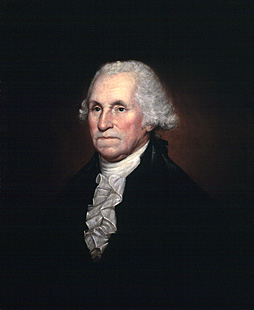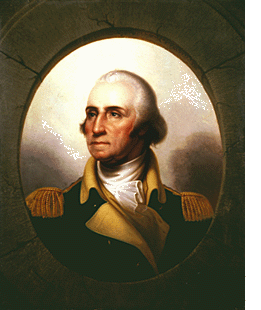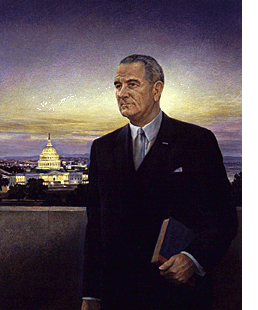UPDATE VII: Here's a pretty legit reasoning on why it's not a 'tax':
Never before in the court’s history has it it interpreted as a tax: 1) What was explicitly stated to be a penalty in the statute; 2) Whose function, as demonstrated in the statute, is punitive; and 3) Whose position in the statute IS NOT IN THE FUNDING SECTION. Congress went to great lengths to assure the mandate was not, in any shape or form, interpretable as a tax. As the dissenters noted, the house rejected an earlier version of the statute that cast the mandate in the form of a tax.One of my biggest beefs is that it is fundamentally anti-democratic for congress to effectively lie to the people (by calling something a 'mandate' and adamantly decrying it as 'not a tax'), especially when it comes to the taxing power. Justice Scalia made the point in the dissent that the taxing power is important to be an on-its-face honest debate for the people, since the politicians who are willing to vote for a new tax are risking their own political futures. They should not be allowed to circumvent that risk by lying to voters point-blank and having judges uphold those lies.
UPDATE VI: Sean Trende at RealClearPolitics seems to agree with my conspiratorial thought, that the Chief may have just insulated himself against charges of partisanship with this decision:
I don’t think invalidating the ACA would have affected the court’s legitimacy that much, at least outside of liberals in the legal academy. But taken as a whole, this series [ed. see below for the list] of decisions really might have irrevocably hurt the court’s reputation for independence.
But Roberts has something of an ace up his sleeve now. Accusations of hyper-partisanship are much harder to make against him, and he has more freedom to move on these issues.
All told, it is easier for the conservative wing of the court to make some significant rulings in some other policy areas. In so doing, he actually made significant progress for judicial conservatives while ruling against conservative policy. And he might still see that policy repealed if Republicans win in the fall.
I don't know if that was his intention, but it's probably a helpful side effect for Roberts. Trende lists some of the upcoming cases, which include major issues that will almost certainly be decided next term in big ways, including affirmative action, more campaign finance, and the Voting Rights Act. If conservatives win those, then an entire generation of jurisprudence will have been swept away.
Still, I don't think that was his guiding thought.
Or is that just thinking too hard about this?
UPDATE IV: Here's the reasoning behind the conservative dissents, treating a penalty as distinct from a tax:
In a few cases, this Court has held that a ‘tax’ imposed upon private conduct was so onerous as to be in effect a penalty. But we have never held – never – that a penalty imposed for violation of the law was so trivial as to be in effect a tax.
UPDATE III: Some people think that Roberts may have pulled a switcheroo last minute, since the conservative dissent reads more like a majority opinion (referring to Ginsburg's dissent as 'the dissent' and not even debating the majority holding, that the individual mandate is a tax). Weird if that actually happened. If I recall, a similar thing happened in Planned Parenthood v. Casey, where Kennedy originally voted to overturn Roe v. Wade in the post-oral argument conference but then had second thoughts. Rehnquist, if I recall, was really, really mad, since he had already started an epic opinion that then had to become a blistering dissent.
UPDATE II: The amount I guessed ($2300) as the 'tax' is incorrect. Via this, it is as follows:
Under the Act’s complicated shared responsibility payment structure, the minimum shared responsibility payment amount per year for each adult who lacks minimum essential coverage will be $95 for 2014, $325 for 2015, $695 for 2016, and $695 or more for 2017 or later, increased due to cost-of-living adjustments
UPDATE II-A: That amount above is only for an individual. For a family, it is substantially more. I saw on the news today that by 2016, for a family, the penalty--ahem, 'tax'--is over $2000.
UPDATE: The money quote (not so much legally as philosophically) from the opinion: "It is not our job to protect the people from the consequences of their political choices." Or, in other words: "Hey, America, you elected the morons. It's your fault they passed this crap in the first place."
________________________________
So, I've tried to generally avoid the political on this blog for a while, since it just gets my blood boiling so much. Drawing pictures is fun and happy and uncontroversial. However, with a once-in-a-generation case having just been decided by the Supreme Court (SC), I feel that I need to just let all the pent-up nervousness and frustration out. (Here's a link to the .PDF of the opinions.)
Now, for anyone who knows me or reads any of my stuff, it's pretty clear that I probably don't like the ACA ('Obamacare'). I don't. Of course the American health care system is broken. Of course costs are out of control. Of course something needs to be done. However, I have never been convinced that a centralization of authority into the hands of the federal government is the best alternative to the crap we have. The federal government, while accomplishing some good things, is generally incompetent, especially at dealing with long-term, complex issues. You want the government to regulate your health care? Try going to a post office to send a package, and see how frustrating that is. Do you really want those people taking out your spleen? While that is an anecdotal response, it illustrates the larger problem: one-size-fits-all solutions by a government that has no competition to keep it efficient never succeed in the real world. Government is bloated, heartless, and inefficient. At least corporations are heartless and streamlined. That's why, I fully predict, in the next few decades, the American healthcare system (even with Obamacare in place) will collapse upon itself. It's just not sustainable, and any reasonable projection of Obamacare's costs show that to be true. I'm not going to pretend that I have better ideas on how to deal with the crisis, but I also don't have to. I'm not a politician.
Now, with that all said, onto the legal parts.
The ACA was upheld as constitutional today by a vote of 5-4, with Chief Justice Roberts joining the four SC liberals to hold that the individual mandate, the most controversial aspect of the bill, is a tax, and is therefore constitutional. At first glance, that frustrates me, but I also can't necessarily disagree. Anthony Kennedy (!), dissenting, writes that he (and Scalia, Thomas, and Alito) would've overturned the entire law. His reasoning against the tax is this: in his view, congress doesn't have the authority under the Commerce Clause to force an individual to engage in a commercial transaction (I agree), and since it doesn't have that power in the first place, it doesn't have the power the treat that decree as a tax, so the taxing power doesn't apply (I am dubious on that).
Congress has passed numerous laws which can be construed in the same way as the individual mandate, if viewed as a tax. For example, the mortgage-interest deduction. If you own a home, you are able to deduct that amount, and your taxes are lowered. Non-homeowners don't get that deduction. While the mandate is viewed in different light (instead of 'buying something leads to deduction', it's 'not buying something leads to penalty'), the two, as a matter of formal logic, are effectively the same. The individual mandate, instead of being viewed as a penalty, can be seen as a deduction in this light: everyone has to pay an extra dollar amount in taxes (or whatever the individual mandate penalty is), but those who buy health insurance can deduct that amount, so aren't taxed on it. While it may seem a stretch to some, in my limited knowledge of constitutional law, I can't see that as being outside of congress's taxing power.
My only beef is the fact that it's been described as a 'penalty' by the administration and congress from the beginning. It being regarded as a 'tax' seems disingenuous. However, I guess the SC decided that, in the end, when you put lipstick on a pig (and call it a 'penalty'), it's still fundamentally a pig (a 'tax'). I'm not happy about it, but the reasoning is pretty sound, and Kennedy's dissent doesn't really convince me otherwise. I'd like to see some better justification.
However, the silver lining for 'originalists' (or whatever those of us who believe in a limited government of enumerated powers are calling ourselves these days), is that the Chief Justice made clear in his opinion that the individual mandate exceeds congress's powers under the Commerce Clause. While not a cause for celebration, it is at least a cause for a sigh of relief. My greatest fear has been that if the government has the power to compel you to enter into a private contract, it effectively has the power to do anything it wants, and therefore, we do not live under a government of limited, enumerated powers. Roberts explicitly states that the ACA would be held unconstitutional under that rubric. Now, there aren't many cases (read: there aren't any) coming forward to the SC any time soon dealing with other types of government mandates. So, the finding won't have much general applicability. However, it does put some kind of a limit onto the ever-expanding Commerce power that congress has been granted. Frankly, I'd like to see more Commerce Clause cases come forward, and I'd like to see them be struck down as unconstitutional. When push comes to shove, even more than an overturn of cases like Roe v. Wade, small-government folks should be trying to get Wickard v. Filburn thrown into the dustbin of history. That's the case that gave congress such expansive power that it's allowed to enter into your most private dealings, under the auspices of 'regulating interstate commerce.'
So, in the end, the nation still stands, teetering under an unsustainable health care system and an unsustainable debt burden. The optimist in me thinks it'll all work out fine, but the realist in me sees our current crop of politicians and concludes that it's all going to the dogs. Good thing there's so much to look forward to!
And, to end on a happier note, here's a picture of a monkey carrying a puppy:



.jpg)









